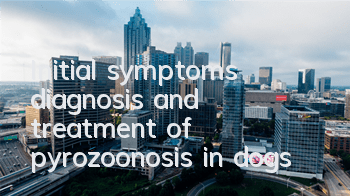Introduction to cataract symptoms in dogs:
1. Vision was normal at the beginning of the disease;
2. When the lens in the dog's eyes loses its transparency and further develops into lens opacity, the pupil turns blue-white or gray with a pearl-like luster, the vision disappears or decreases, and when the opacity is obvious, the diagnosis can be confirmed by naked eye examination; < /p>
3. In the later stages of the disease, the lens becomes hard and loses excess water, making it impossible to see the fundus during ophthalmoscopy. As water is further lost, the lens becomes uneven, shrinks and becomes smaller, and dislocation may occur naturally;
4. Found in miniature schnauzers, miniature poodles and American cocker spaniels, it often causes bilateral lesions leading to blindness. This disease is also common in other species such as golden retrievers, Siberian huskies and Boston dogs;
Cataract can be divided into 4 different stages: early stage - immature stage - mature stage - over mature stage. The immature stage can be divided into early immature (<50% lens opacity), late immature (>50%), Maturity is when the crystal opacity reaches 100%. Mild or moderate intraocular inflammation is not easy to detect in appearance, but by the time the owner notices symptoms of eye discomfort such as squinting and blinking in the dog, the cataract is already mature and has significant inflammatory complications.
Causes of cataracts:
1. Congenital cataract in dogs: It begins in the embryonic period. Due to abnormal development of the lens and its capsule in the mother's body, it manifests as cataract after birth.
2. Traumatic cataract in dogs: Due to various mechanical injuries (such as corneal penetration), the nutrition of the lens and its lens capsule is impaired.
3. Secondary cataract in dogs: secondary to other eye diseases and systemic diseases, such as iritis, uveitis, diabetes, etc.
4. Canine senile cataract: It is a degenerative change of the lens, mainly seen in older dogs aged 8-12 years.
Precautionary measures:
1. Early treatment of the cause of the disease.
2. Once it becomes cloudy, it cannot be absorbed. Surgical therapy is currently the only effective method. Including lens aspiration, intracapsular or extracapsular removal, but surgery is dangerous when glaucoma occurs later.








